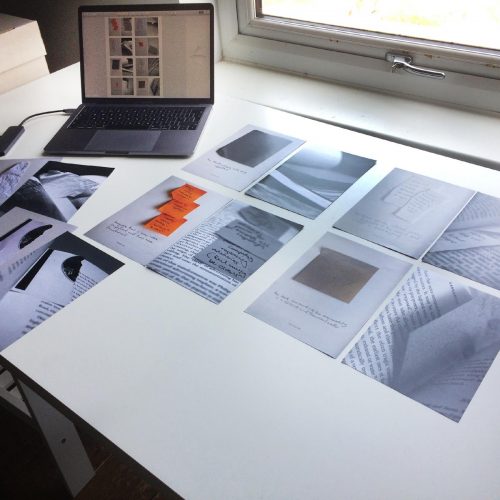
Demonstrating physical processes
Experimenting with Physical Formats and Tactile Processes to Demonstrate Critical Thinking
One of the functions of keeping a learning log is to demonstrate and reflect on your process of making a final selection of images for each assignment. This process can involve reflecting on and documenting any physical work which reveals your critical thinking
Sometimes students find it helpful to think about blog posts in two categories:
- process blog posts which act like a window into the studio space, images with annotations, experiments with reflection on intention and success, less resolved or unfinished work as you think about potential ideas, documenting details of physical print surfaces, and anything which reveals your thinking, selection, and ongoing development process
- outcome blog posts which act like a gallery space, and present the finished work as cleanly as possible
Printing on different types of paper, putting images into books, or thinking about the physical carrier of the image is something which impacts how an audience may read your work. Using different paper, surfaces, and printing processes, can make a big difference to how your work looks, and you can document this through photographing the whole image or a macro detail of the image surface while reflecting on your choices.
The scale of your work will also change its impact. For instance printing images 6×4 will for me always hold connotations of the holiday snap from a commercial printer. A3 images on fine art paper may suggest a gallery as the intention for the work. Square images suggest polaroid images or Instagram. Small images require an intimate engagement from the audience, rather than something that can be seen from a distance. It is always great to see students documenting and reflecting on how these choices support the intention behind the work.
Wolfgang Tillmans’ photographic installations in a gallery space frequently play with scale and groupings of images and this technique might enable you to consider narrative, or the importance of particular images in any group. Documentation of his work shows tiny surface details and installation views: https://tillmans.co.uk/component/jcgtillmans/2014-essen
Sophie Calle’s arrangements of framed and shelved images for Blind #14 demonstrate clear consideration for how an audience might interact with the work beyond the image content itself.
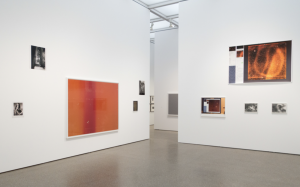
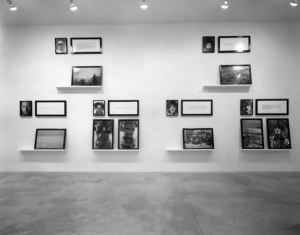
I often find it helpful to print my images as I am developing my ideas, to move images about, think about the order, analyse details of an image, consider scale and its impact. You can overtly demonstrate your selection and thinking process by adding visuals to your blog which show you rearranging printed images in groups to get the best fit for your assignment set. Or you might choose to arrange them digitally using a blank page as a gallery wall to explore visual connections between images. At this stage you might even discover there are images missing from your ideal set which you can endeavour to capture in a subsequent shoot.
The key is to find which methods support you to develop your personal voice. Being imaginative in your presentation and experimenting with physical formats can be a rewarding part of the creative process. through selection and potential sets of images, and final order for artist book.
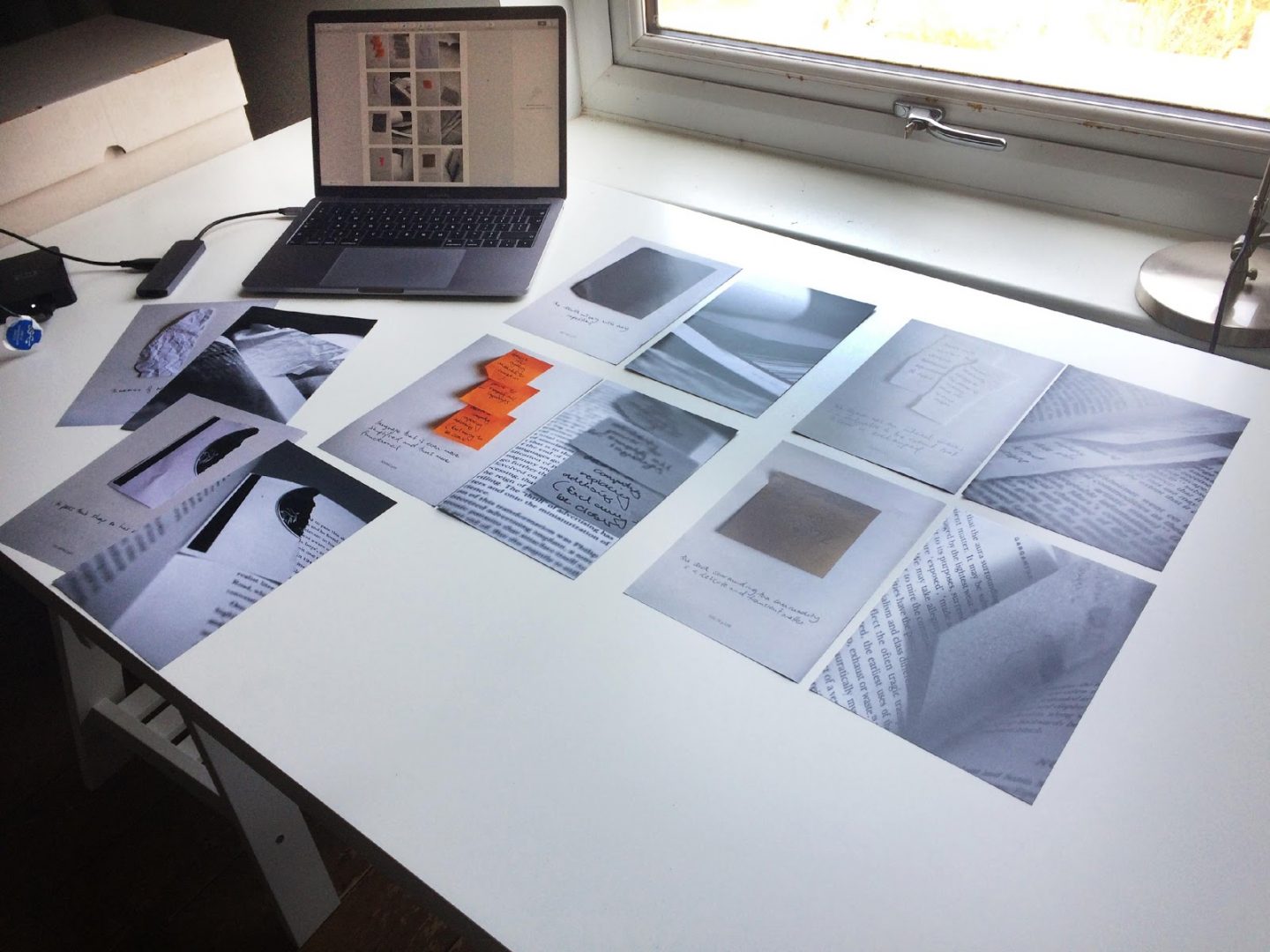
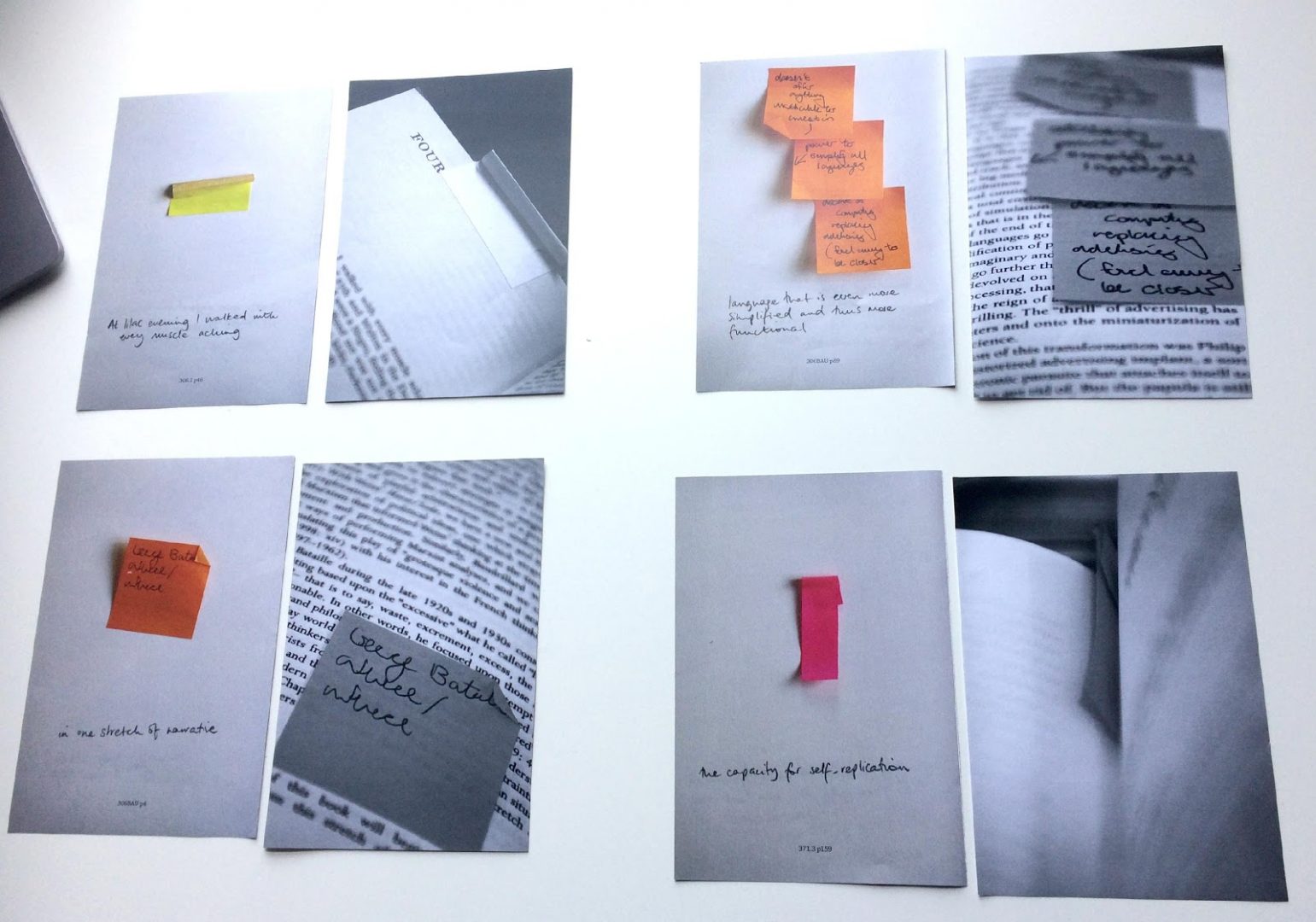
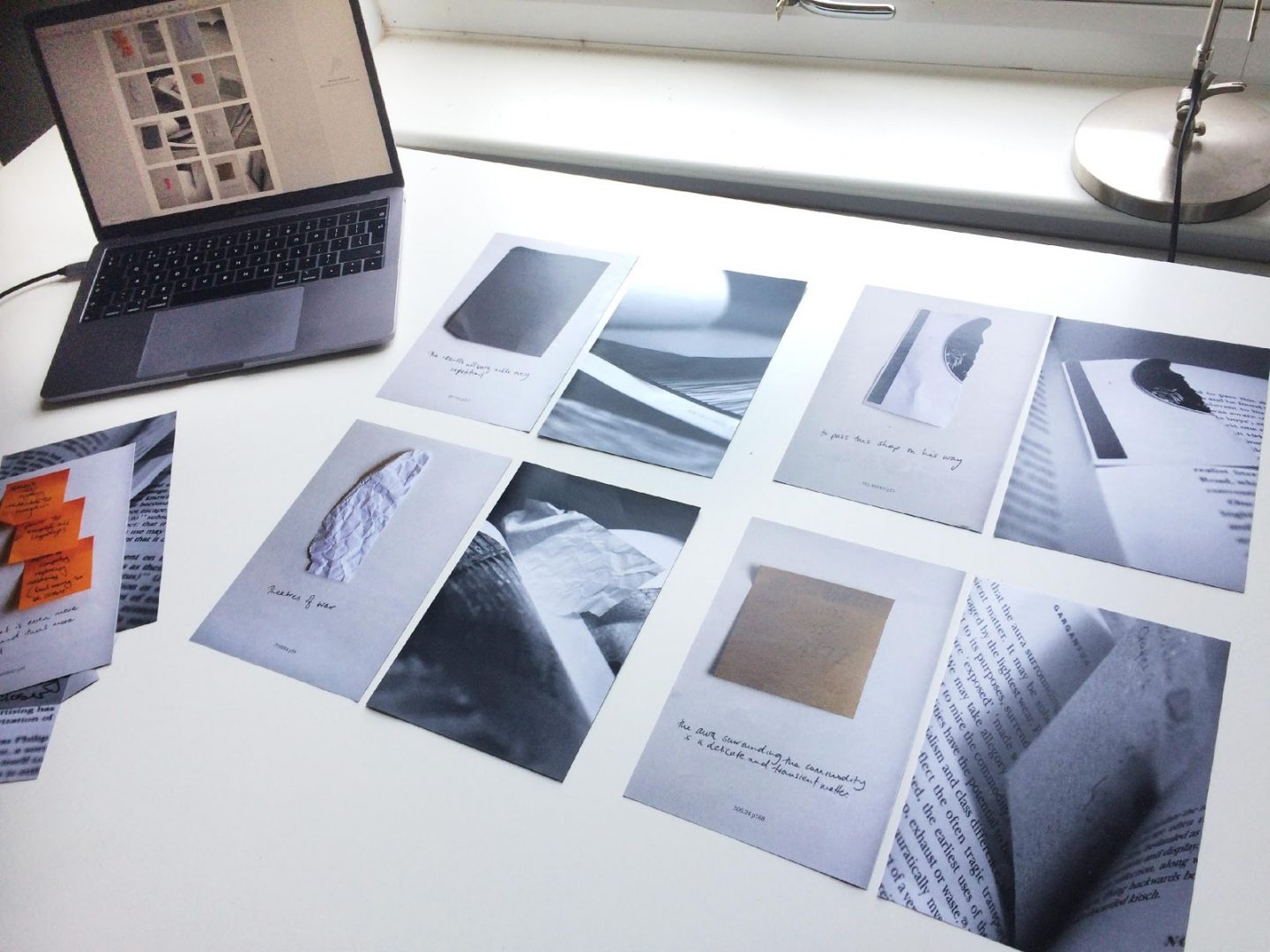
|
|







Thanks for such a helpful post Rachel. Scale is so easy to neglect when working on a screen but can play such a vital part in the audience relationship to work.